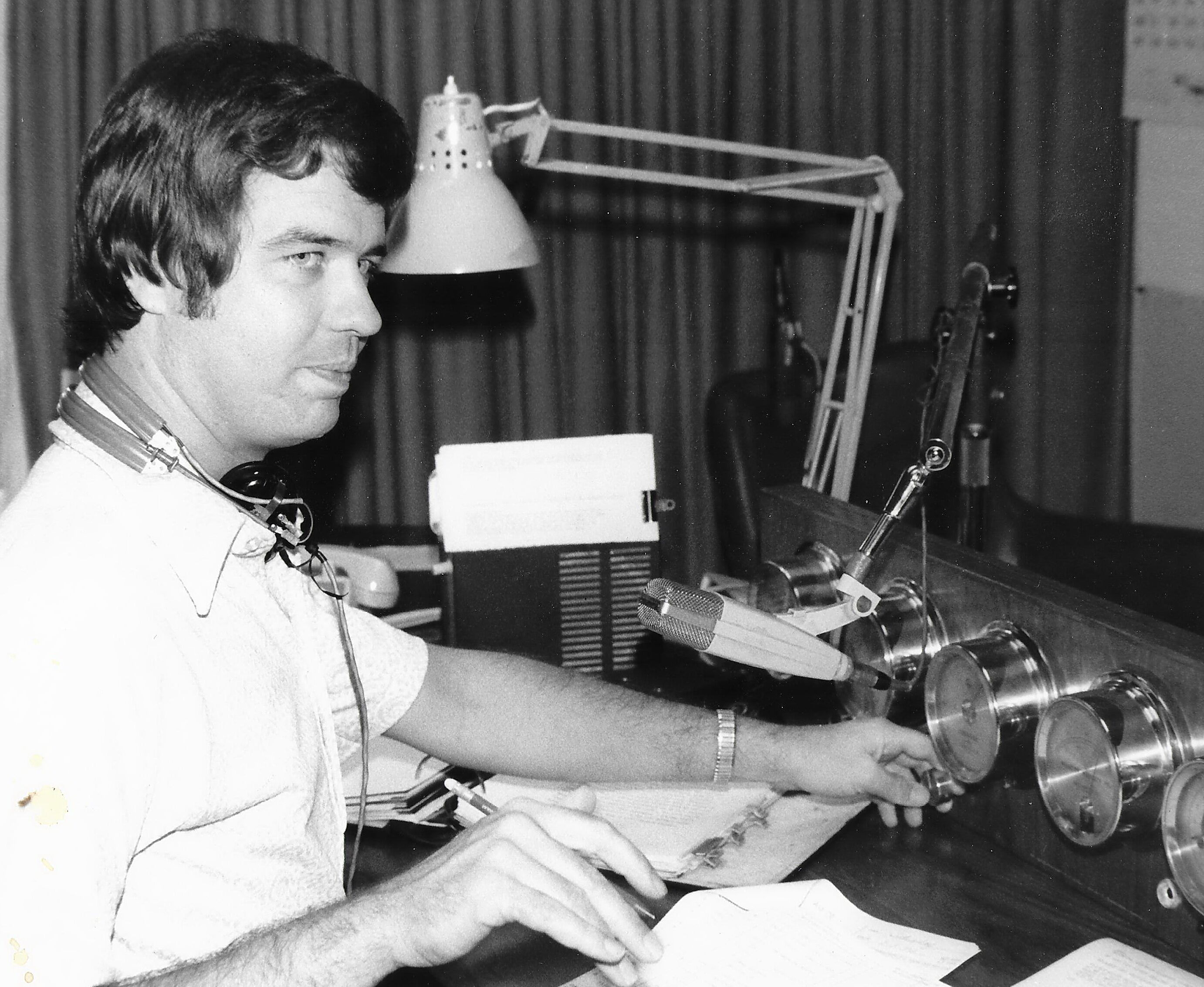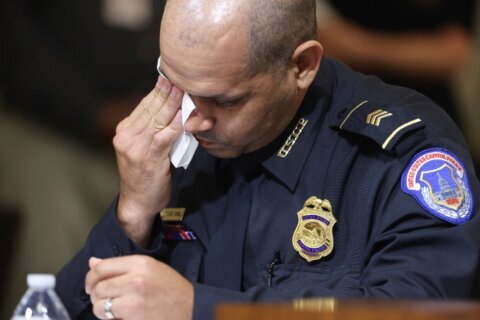Back before WTOP switched to all-news, the king of Washington-area radio was WMAL 630 AM. Wednesday, the four orange and white steel towers that carried the station’s middle-of-the-road programming to waiting ears in the 1960s and 1970s were demolished, in 23 seconds.
The towers, in Bethesda, Maryland, were brought down in a carefully-orchestrated series of explosions, to make way for 309 new homes that will be built in a Toll Brothers subdivision.
With neighbors and former neighbors watching from a safe distance, explosives set by Maryland-based Controlled Demolition Inc., one explosive knocked out three legs of each tower, while TNT pushed the towers to fall in the right direction, toward the middle of the large field, located off Greentree Road.
While the demolition of the towers in 2020 paves the way toward development, when the towers stood in 1968, they carried WMAL-AM’s at-the-time powerhouse programming, including the ratings-leading Harden and Weaver morning show.
WMAL personality Tom Gauger told WTOP he remembers his first visit to his new employer’s studios, which at the time were located next to the towers: “Hal Green took me to the studios in the middle of nowhere, Maryland. Was leaving exciting Miami a mistake?”
Gauger told WTOP it didn’t take him long to love the station “and our studios out in the country,” within the Capital Beltway.
”It was so quiet and pleasant, that I did several shows sitting at a picnic table under a tree,” Gauger said. “We called them ‘out the window remotes,’ with the engineer handing me a microphone through the control room window.”
Gauger, who went on to become a newscaster with United Press International, said the pastoral location of WMAL was in stark contrast to downtown, Washington, D.C.
“It was a different time, with neighborhood kids wandering by, and some walking right into the studio,” said Gauger. “We didn’t lock the door.”

Tom Hunt, a former neighbor, who grew up in a house across the street from the towers, came with a family member to witness the demolition.
“We lived in this field, as kids. We’d play soccer and football out here,” Hunt said.
“We used to visit the WMAL broadcast house, and Willard Scott and these guys would welcome you in, and they’d give you these little sailor hats — little white sailor caps — they were just really good people.”
Not all the events in the field were athletic in nature.
“When we got older, you realized on Saturday nights there were parties out here, in the evenings,” Hunt said.
As he watched the towers come down, Hunt waxed nostalgic about his field of youthful dreams.
“It’s exactly as it was, it hadn’t changed a bit.”








